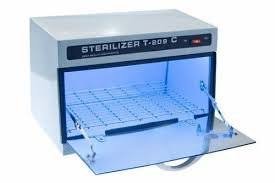UV Cabinet Calibration in Pharmaceuticals

UV Cabinet Calibration in Pharmaceuticals
1. Introduction
A UV Cabinet (also called a UV viewing cabinet or UV inspection chamber) is used in pharmaceutical laboratories for visual inspection of materials—especially for thin-layer chromatography (TLC) plates, identification tests, and contamination detection—under UV light of specific wavelengths (commonly 254 nm and 365 nm).
Calibration ensures the UV cabinet’s wavelength accuracy, intensity, and operational functionality meet predefined specifications.
2. Objective
-
To verify that the UV cabinet emits UV light at the correct wavelength and intensity.
-
To ensure compliance with GMP and GLP requirements.
-
To guarantee accurate and reproducible analytical results.
3. Parameters for Calibration
-
Wavelength Verification
-
Check if the UV lamps emit at the specified wavelengths (254 nm & 365 nm).
-
-
Intensity Measurement
-
Measure UV intensity in µW/cm² using a calibrated UV radiometer.
-
-
Uniformity Test
-
Verify uniform illumination across the viewing surface.
-
-
Operational Checks
-
Inspect timer function, safety interlocks, and lamp condition.
-
4. Calibration Procedure
-
Preparation
-
Switch on UV cabinet and allow lamps to stabilize (usually 5–10 minutes).
-
Ensure the cabinet is clean and free from dust.
-
-
Wavelength Check
-
Use a UV spectroradiometer or calibrated UV radiometer.
-
Confirm peak wavelength is within ±2 nm of the nominal value.
-
-
Intensity Check
-
Place the UV radiometer sensor at multiple points in the viewing area.
-
Record readings for both 254 nm and 365 nm settings.
-
Compare to manufacturer specifications.
-
-
Uniformity Check
-
Measure intensity at different points (e.g., center, corners).
-
Variations should be within ±20% of the average intensity.
-
-
Functional Checks
-
Test ON/OFF switches, timer controls, and any door interlocks.
-
Inspect lamp condition (no flickering or blackening at ends).
-
5. Acceptance Criteria
-
Wavelength: Within ±2 nm of nominal (254 nm / 365 nm).
-
Intensity: ≥70% of manufacturer-specified minimum.
-
Uniformity: ±20% of mean intensity.
-
All operational features function correctly.
6. Frequency
-
Before first use.
-
Annually (or as per SOP).
-
After lamp replacement or repair.
7. Documentation
-
Equipment ID.
-
Date and time of calibration.
-
Measured wavelength, intensity, and uniformity data.
-
Pass/Fail result.
-
Analyst and reviewer signatures.
Regulatory References
-
USP <857> Optical Rotation and UV-Vis Performance Verification.
-
WHO GLP Guidelines.
-
ICH Q7 (Equipment Calibration).

